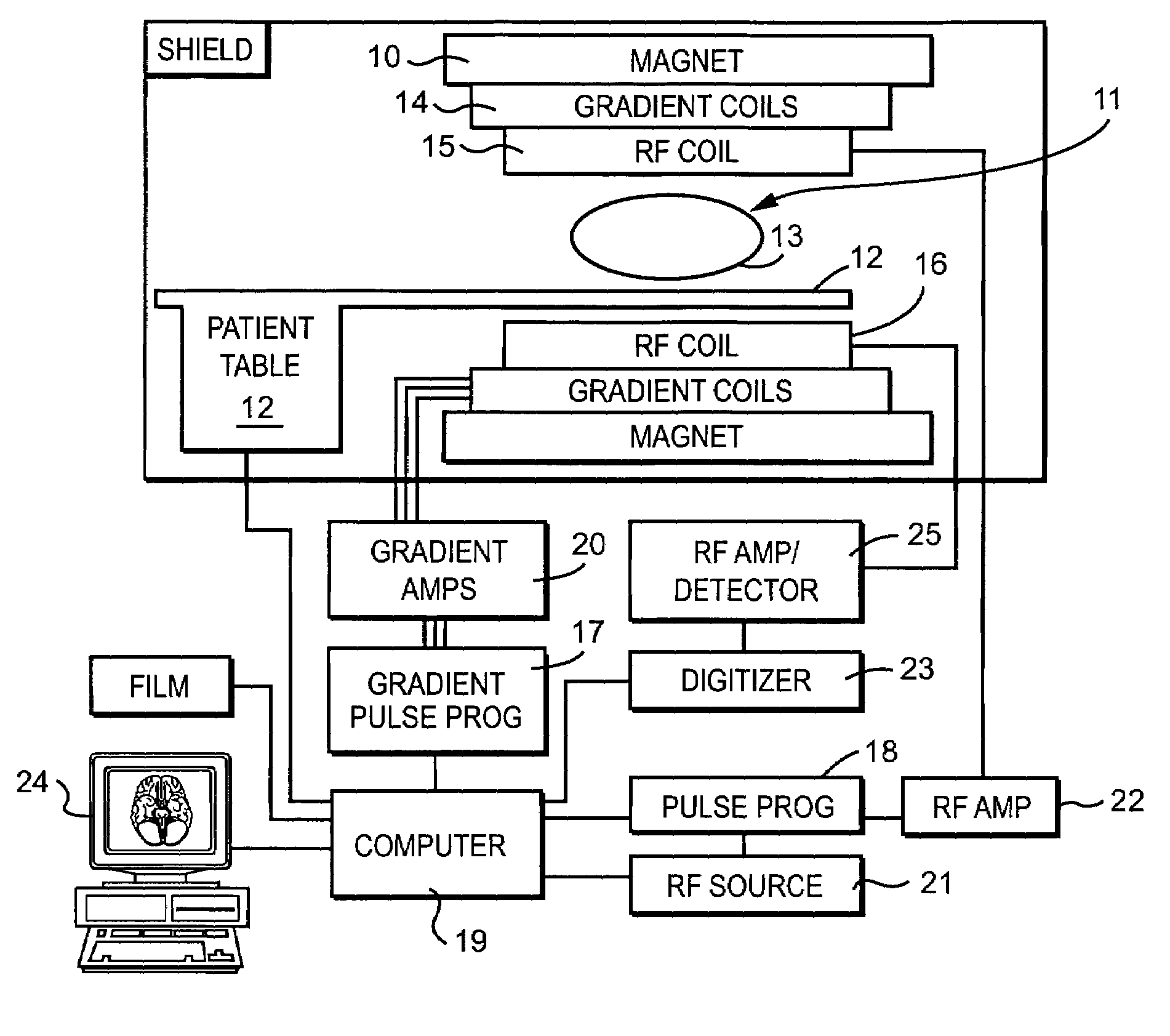Method and apparatus for diffusion magnetic resonance imaging with the effects of eddy currents compensated
a technology of eddy current compensation and diffusion magnetic resonance, which is applied in the direction of magnetic measurements, instruments, measurement devices, etc., can solve the problems of image distortion, weak diffusion-weighting gradient pulse eddy current effect, and the robustness and quality of such correction procedures are often limited by the particular algorithm used, so as to achieve a high degree of accuracy and minimize the effect of eddy currents
- Summary
- Abstract
- Description
- Claims
- Application Information
AI Technical Summary
Benefits of technology
Problems solved by technology
Method used
Image
Examples
Embodiment Construction
[0019]As shown in FIG. 1, a magnetic resonance imaging (MRI) system typically includes a large magnet 10 that applies a static magnetic field (B0) to an object 13 being imaged, gradient coils 14 for applying spatially distributed gradient magnetic fields (Gx, Gy, and Gz) to the object along three orthogonal coordinates, and RF coils 15 and 16 to transmit and receive RF signals to and from the selected nuclei of the object. The RF coils 15 and 16 may be part of a single coil, separate coils or may each be RF coil arrays. The object 13 lies on a table 12 such that a portion of the object to be imaged is in an “imaging volume” 11 between the magnet and coils, which defines a field of view (FOV) of the MRI system.
[0020]To acquire MRI data, the MRI system generates magnetic gradient fields and RF nutation pulses using MRI pulse sequence controllers 17 and 18 that operate under the control of a programmable processor 19, which may comprise a workstation computer 24. In addition, the proce...
PUM
 Login to View More
Login to View More Abstract
Description
Claims
Application Information
 Login to View More
Login to View More - R&D
- Intellectual Property
- Life Sciences
- Materials
- Tech Scout
- Unparalleled Data Quality
- Higher Quality Content
- 60% Fewer Hallucinations
Browse by: Latest US Patents, China's latest patents, Technical Efficacy Thesaurus, Application Domain, Technology Topic, Popular Technical Reports.
© 2025 PatSnap. All rights reserved.Legal|Privacy policy|Modern Slavery Act Transparency Statement|Sitemap|About US| Contact US: help@patsnap.com



